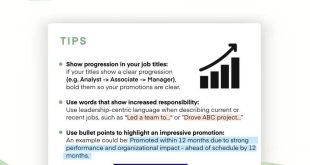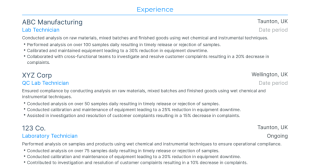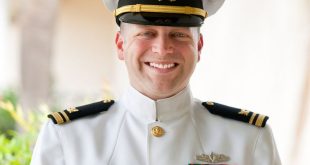How To Become A Us Navy Officer – This article requires additional citations for verification. Please help improve this article by adding citations to reliable sources. Unsourced content can be challenged and removed. Find sources: “Naval Reserve Officers Training Corps” – News · Newspapers · Books · Scholars · JSTOR (August 2015 ) (Learn how and how to remove this sample message)
The Naval Reserve Officer Training Corps (NROTC) program is a college-based, commissioned officer training program of the United States Navy and United States Marine Corps.
How To Become A Us Navy Officer
In September 1924, the Pilot Naval Reserve Unit was established at St. John’s College in Annapolis, Maryland. It allows the Navy to test the concept before establishing its regular units. In 1926, the US Department of the Navy established the Naval Reserve Officer Training Corps. Its purpose was to prepare a pool of qualified officers for rapid expansion of the army in case of unforeseen emergencies. A secondary objective was to educate college faculty and students about the Navy and its national importance. The University of California, Berkeley, Northwestern University, University of Washington, Harvard University, Yale University, and the Georgia Institute of Technology have each accepted sixty Marine Reserves. Captain Chester W. Nimitz commanded the University of California NROTC unit. The first NROTC students received a uniform and (in their junior and senior years) a living allowance of $210. They had the opportunity to participate in a five-day training cruise every summer for which they were paid Rs. Transport allowance was provided between CT and their college and port of embarkation and departure.
Historic! Us Gets First Woman As Top Navy Officer; President Biden Chooses Admiral Lisa Franchetti
The pilot unit at St. John’s College was disbanded by 1929, but the original six regular units are still operating in 2014 (despite historical gaps at Harvard and Yale).
Under the modern US Navy ROTC system, graduates become active duty officers rather than reserve officers and are required to serve 5 years for the Navy option and 4 years for the Marine and Nursing options. The Naval Reserve Officer Training Corps commissions individuals into the United States Navy as an ensign or as a United States Marine Corps second lieutenant. While attending college, these future officer candidates are known as midshipmen. Naval Academy midshipmen are on active duty, while NROTC midshipmen are in the Navy Reserve but on active duty for training periods during the summer. The primary difference is that NROTC midshipmen attend a regular civilian college or university, while Naval Academy midshipmen attend the United States Naval Academy in Annapolis, MD, which is a more regimented, military environment.
Beginning in 2009, the scholarship program was changed to sponsor STEM degrees in the humanities.
Each military service is authorized by law to award scholarships to up to 5,500 midshipmen or cadets at a time. The US Navy maintains about 6,000 midshipmen at any given time, with the remainder competing for scholarships.
Josia Pagler Becomes The First Woman Warrant Officer To Complete Officer Candidate School At Officer Training Command Newport
Most NROTC midshipmen join the program right after high school. It is a midshipm scholarship or college program midshipm.
Scholarship midshipmen are those who have applied to the Navy (during their senior year of high school or early college studies) for an ROTC scholarship. Some NROTC students have served as enlisted m or wom in the Navy or Marine Corps. The highly selective application process includes a comprehensive written application and an interview with a Navy representative. Applicants must also pass a trans medical screening process. Navy scholarships pay midship, academic fees (i.e. lab fees) as well as additional fees for books. All midshipmen fall under one of three categories: Navy Option, Naval Nursing Option, or Navy Option. The Navy does not pay for room and board; However, some schools offer scholarships to cover at least part of room and board. In addition to tuition, the Navy pays a monthly stipend during the school year. As of 2020, the stipend was $250 per month for first-year midshipmen, with increases of $50 per year thereafter (ie $300/month for sophomores, and so on).
College program midshipmen are those who join Navy ROTC without a scholarship. They complete all activities and requirements of the scholarship center and are also commissioned as a marksman or second lieutenant if they continue in the program for four years. If they do well academically and in the ROTC program they are often awarded a scholarship by the Navy. Because of the technical nature of the Navy, students attending a college without a 4-year scholarship who plan to major in a technical field such as engineering, science or mathematics are more competitive for scholarships.
NROTC assigns all college majors to a 3-tier system, placing advanced engineering majors in Tier-1, most other majors in Tier-2, and majors with simple degree completion requirements in Tier-3. Applicants from Tier-1 and 2 majors are more competitive than Tier-3 applicants for scholarships. Due to the additional difficulty of some STEM majors, such as mechanical engineering, some units may waive the 4-year degree requirement and extend it by one year due to the additional work.
American Connections Media Outreach: Monterey Native Trains To Become Future Navy Supply Officer
Enlisted Navy Enlisted Navy Enlisted Navy Enlisted Navy Enlisted Navy men participating in the ROTC program follow a commission up to Admiral 21 (STA-21) and are known as “Officer Candidates”. They retain their listed salaries.
Enlisted sailors participate in ROTC through the Marine Enlisted Commissary Education Program (MECEP) and are designated by “MECEP” by their rank or program name. (pronounced me-sep) MECEP Marines do not have their school paid for by the Marine Corps and use the Montgomery GI Bill or Post-9/11 GI Bill to pay for school. They will be paid commensurate with their rank, although any promotion while they are in school will be considered non-competitive and will be revoked if they fail out of the commissioning program.
Most college NROTC units are only a part-time commitment to a student’s coursework at a university or college. A typical week-long student ROTC commitment has three basic components:
One or sometimes two days each week are set aside as uniform days, where midshipmen participate in SPD military training such as several hours of tests, close-order drill practice, and drill lectures (either by officers attached to the NROTC unit or by guest lecturers). ) training is usually in the evening after most of the day’s classes are over or early in the morning before classes. It is normal for Marine Option Midship and MECEP to have additional training time for Marine specific training.
Master Chief Petty Officer Of The Navy Mike D. Stevens > U.s. Department Of Defense > Biography
Typically one to three physical training sessions per week (depending on the specific NROTC unit) are required. It is common for Marine Option Midship and MECEP to have additional physical training days.
During the normal school year, Navy ROTC midshipmen must take two official Physical Readiness Tests (PRT). Minimum requirements for testing include 47 push-ups in 2 minutes without rest, at least 1:40 plank without rest and at least 12:00 for men 1.5 mile run and at least 21 push-ups, 1:30 plank and 14:00 for women . 15 1.5 mile runs. All midshipmen are subject to 20-24 PRT norms regardless of actual age. Midshipmen are encouraged to score as high as possible during the tests to increase their FITREP scores among themselves.
If a midshipman fails to meet the minimum requirements for the PRT test, they are automatically transferred to the Fitness Hansemt Program (FEP), which requires them to undergo additional physical training within the unit outside of normal hours. An “inventory” corresponding to the official PRT will be selected during the PRT test term, but your scores will not evaluate your progress throughout the year on your FITREP.
In addition to those activities, there are regularly scheduled classes in marine science that must be taken above the normal college load. Classes are Naval History, Naval Engineering and Weapons, Leadership and Ethics and other areas. In addition to naval science classes, the Navy requires its midshipmen to complete 2 semesters of calculus, 2 semesters of calculus-based physics, one semester of multiculturalism, English grammar and composition, and national defense policy or US military affairs. The Marine Corps only requires National Security Policy/American Military Affairs classes for its mid-career.
Biden Nominates Adm. Franchetti To Be First Woman To Serve As Top Navy Officer
There are many ROTC programs that do not follow this model, instead requiring a full-time commitment from midshipmen during the school year. At Sear Military College, midshipmen are usually housed in barrack-like dormitories with other ROTC cadets, are in uniform at least 5 days a week, and are required to have regular morning and evening shifts. At The Citadel and Virginia Military Institute, cadets wear uniforms 7 days a week, live in barracks, and are confined to campus during the school week to focus on their studies and military training.
Such full-time programs offer a more regimented existence that more closely mimics conscript military life; To TD them
How to become a navy seal officer, how to become a navy submarine officer, how to become a navy intelligence officer, how to become a navy reserve officer, how to become a us navy officer, how to become navy officer, how to become a navy officer, how to become a navy diver officer, how to become navy seal officer, how to become a merchant navy officer, how to become a navy warrant officer, how to become officer in navy



